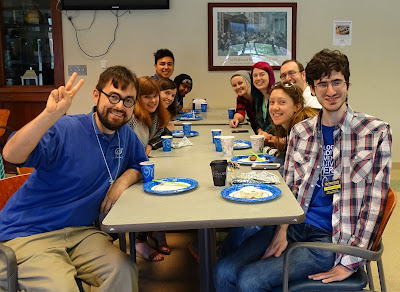Imprecise Language Used by Pro-Life Advocates
 |
| Some tools typically used in a D & C |
[Today’s guest post by Clinton Wilcox is part of our paid blogging program.]
Something I’ve noticed for quite a while is that well-meaning pro-life people tend to ignore any sense of nuance in the abortion discussion. This can lead to the appearance that the pro-life person holds an extremist view, even when the person doesn’t.
An encounter I had recently underscored this problem and, I think, really helps show why pro-life people need to be careful with their words and with their definitions. Whether you mean to or not, refusing to add nuance to your discussions and refusing to be careful with definitions can be harmful to other people, even to other pro-life people.
I was with Justice for All at Fresno State a few weeks ago where I was approached by a woman I’ll call Deanna. She had had three miscarriages, and for her first two miscarriages, the child’s remains were expelled from the womb without any medical intervention. But in her third miscarriage, she couldn’t leave the remains inside because it would cause a life-threatening infection. So the doctor performed a D&C to remove the child’s dead body.
D & C stands for “dilation and curretage.” During a D & C, a cannula is inserted into the uterus attached to a suction tube and the contents of the uterus are sucked out. D & C can be done for a number of reasons, including diagnostic testing in women who are not pregnant, and miscarriage treatment as in Deanna’s case. But when the uterus contains a living unborn child, D & C is a common first-trimester abortion procedure.
Her son, who is apparently college age because he was studying to become a doctor, accused her of doing something wrong by having the procedure done. To him, pro-life people are supposed to oppose all abortions, so it was wrong for his mom to have the D & C procedure done.
The problem with her son’s thinking should be glaringly apparent.
She sought my advice on what to tell her son about the D&C. I assured her that she didn’t do anything wrong. When Deanna had the procedure done, the child was already dead. “Choosing life” was an impossibility. She was having the procedure done to avoid an unnecessary risk to her own life. There was nothing remotely morally problematic with what she did.
Why did this even become an issue? Because there are multiple definitions of the word “abortion.” Within the medical community, any end to a pregnancy other than birth is called an abortion. What laypeople call miscarriages, doctors call spontaneous abortions. And what laypeople call abortions, doctors call induced abortions.
Deanna’s son apparently thought that pro-life people are supposed to oppose all abortions, but this is not the case. An “abortion” to remove a dead baby’s remains from the mother’s uterus is not morally problematic, so that’s an “abortion” that pro-life people can be okay with—if you even want to call it an abortion at all.
When we have our discussions on abortion, let’s seek to add clarity to them by realizing that words often have multiple meanings. If we’re not careful with our definitions, we stand a good chance of being misunderstood, even by those we are trying to help.



Leave a Reply
Want to join the discussion?Feel free to contribute!